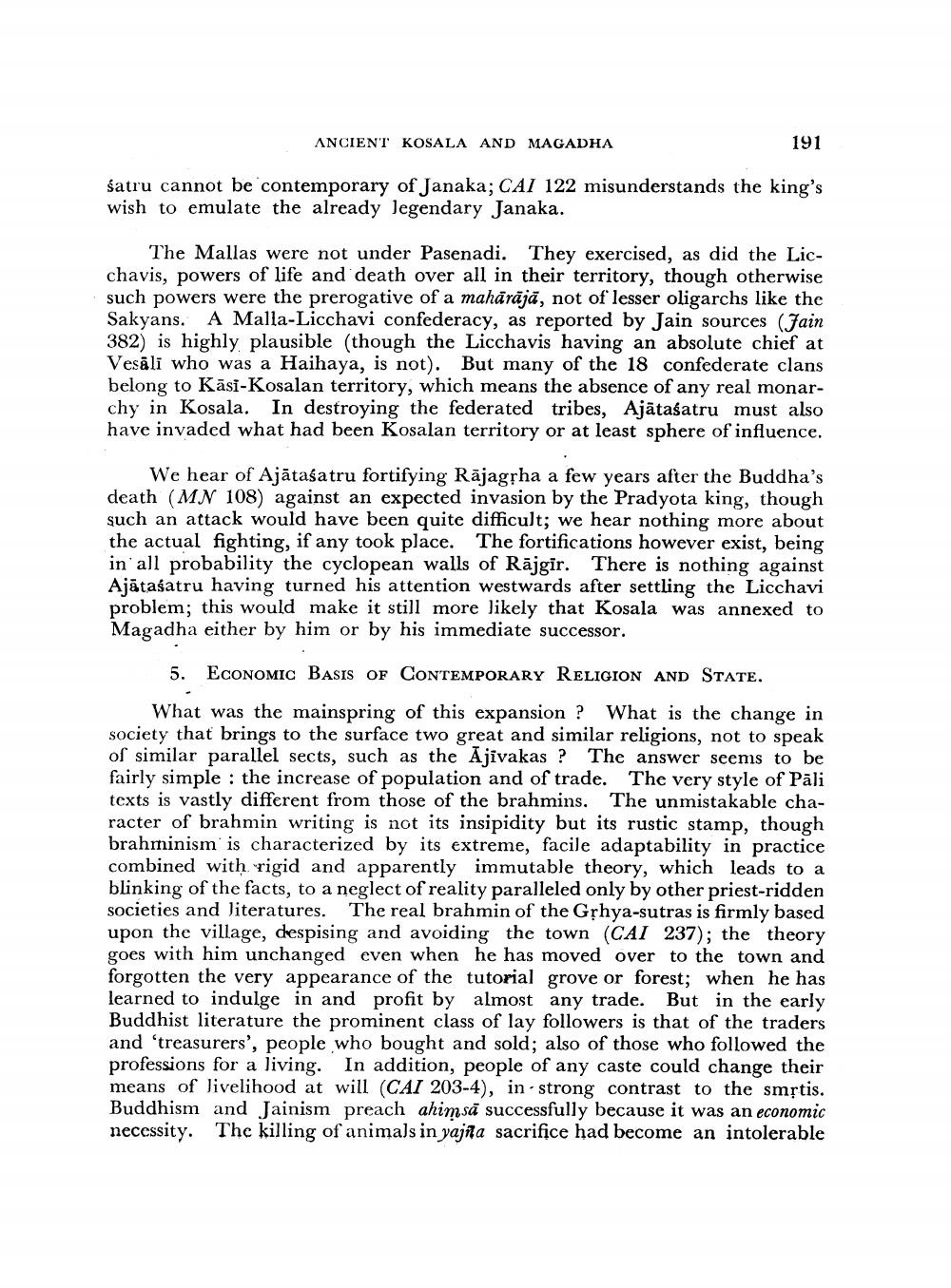________________
ANCIENT KOSALA AND MAGADHA
191
satru cannot be contemporary of Janaka; CAI 122 misunderstands the king's wish to emulate the already legendary Janaka.
The Mallas were not under Pasenadi. They exercised, as did the Licchavis, powers of life and death over all in their territory, though otherwise such powers were the prerogative of a mahārājā, not of lesser oligarchs like the Sakyans. A Malla-Licchavi confederacy, as reported by Jain sources (Jain 382) is highly plausible (though the Licchavis having an absolute chief at Vesāli who was a Haihaya, is not). But many of the 18 confederate clans belong to Kāsi-Kosalan territory, which means the absence of any real monarchy in Kosala. In destroying the federated tribes, Ajātaśatru must also have invaded what had been Kosalan territory or at least sphere of influence.
We hear of Ajātaśatru fortifying Rājagļha a few years after the Buddha's death (MN 108) against an expected invasion by the Pradyota king, though such an attack would have been quite difficult; we hear nothing more about the actual fighting, if any took place. The fortifications however exist, being in' all probability the cyclopean walls of Rājgir. There is nothing against Ajātasatru having turned his attention westwards after settling the Licchavi problem; this would make it still more likely that Kosala was annexed to Magadha either by him or by his immediate successor.
5. ECONOMIC BASIS OF CONTEMPORARY RELIGION AND STATE.
What was the mainspring of this expansion ? What is the change in society that brings to the surface two great and similar religions, not to speak of similar parallel sects, such as the Ajivakas? The answer seems to be fairly simple : the increase of population and of trade. The very style of Pāli texts is vastly different from those of the brahmins. The unmistakable character of brahmin writing is not its insipidity but its rustic stamp, though brahminism is characterized by its extreme, facile adaptability in practice combined with rigid and apparently immutable theory, which leads to a blinking of the facts, to a neglect of reality paralleled only by other priest-ridden societies and literatures. The real brahmin of the Gșhya-sutras is firmly based upon the village, despising and avoiding the town (CAI 237); the theory goes with him unchanged even when he has moved over to the town and forgotten the very appearance of the tutorial grove or forest; when he has learned to indulge in and profit by almost any trade. But in the early Buddhist literature the prominent class of lay followers is that of the traders and 'treasurers', people who bought and sold; also of those who followed the professions for a living. In addition, people of any caste could change their means of livelihood at will (CAI 203-4), in strong contrast to the smộtis. Buddhism and Jainism preach ahimsa successfully because it was an economic necessity. The killing of animals in yajila sacrifice had become an intolerable




